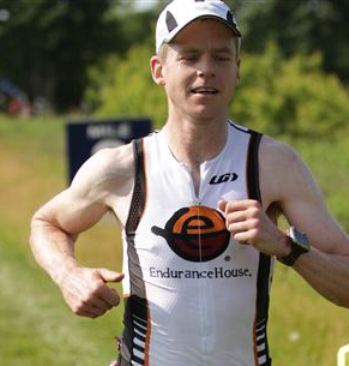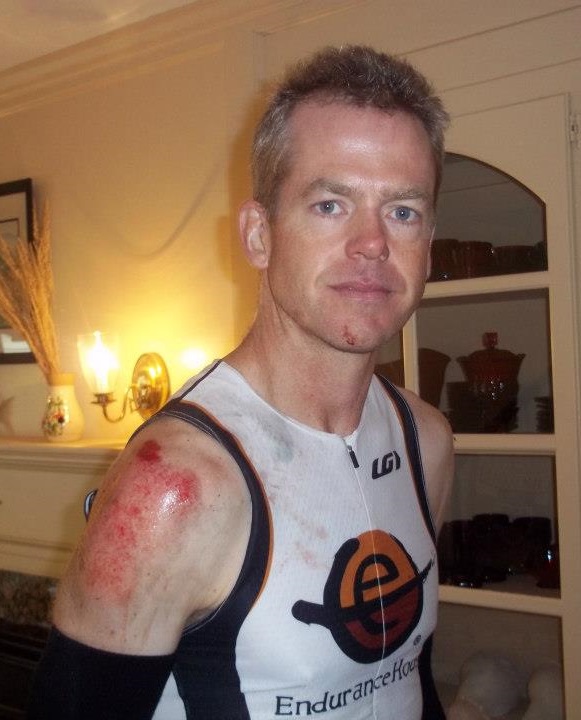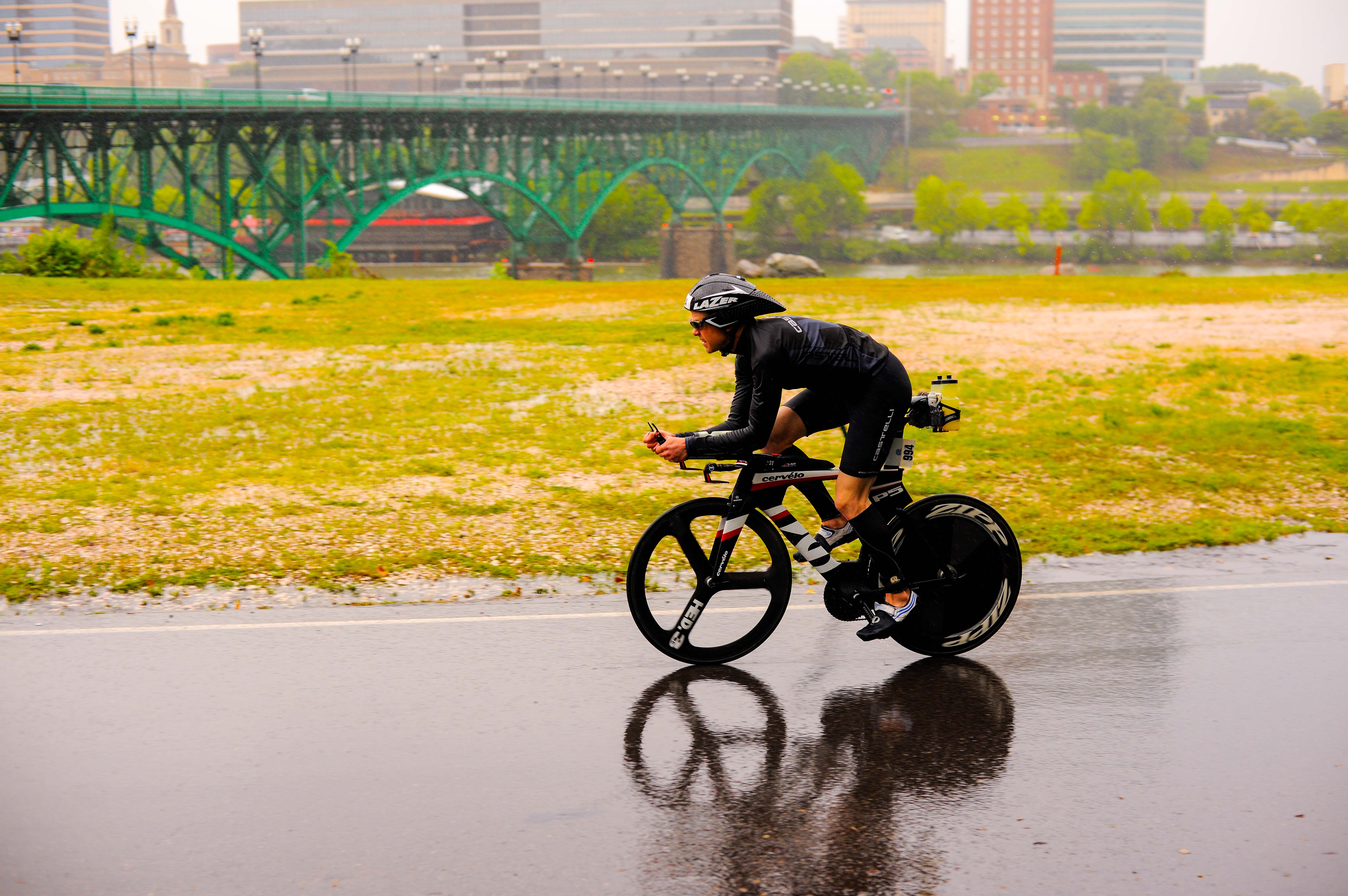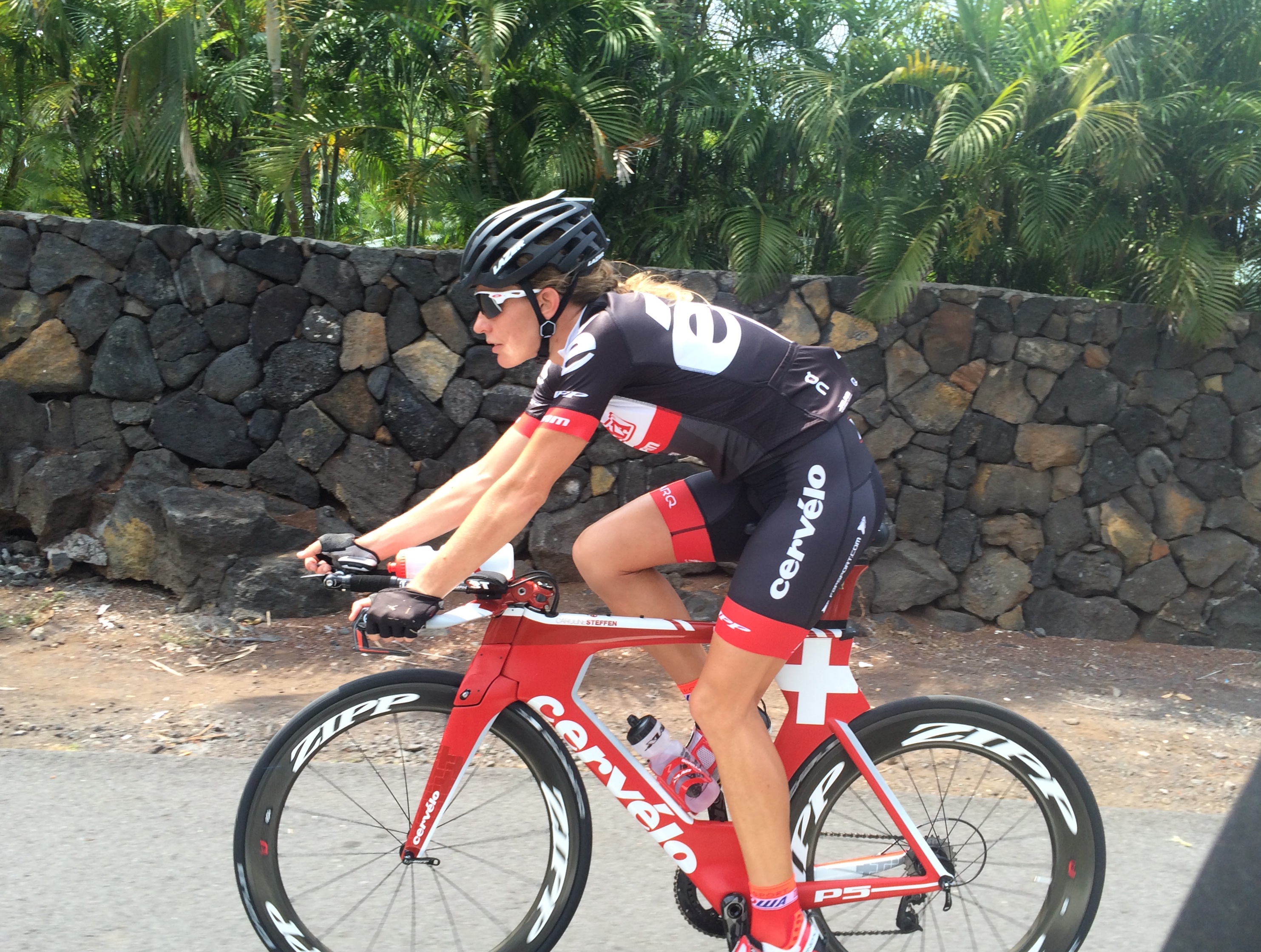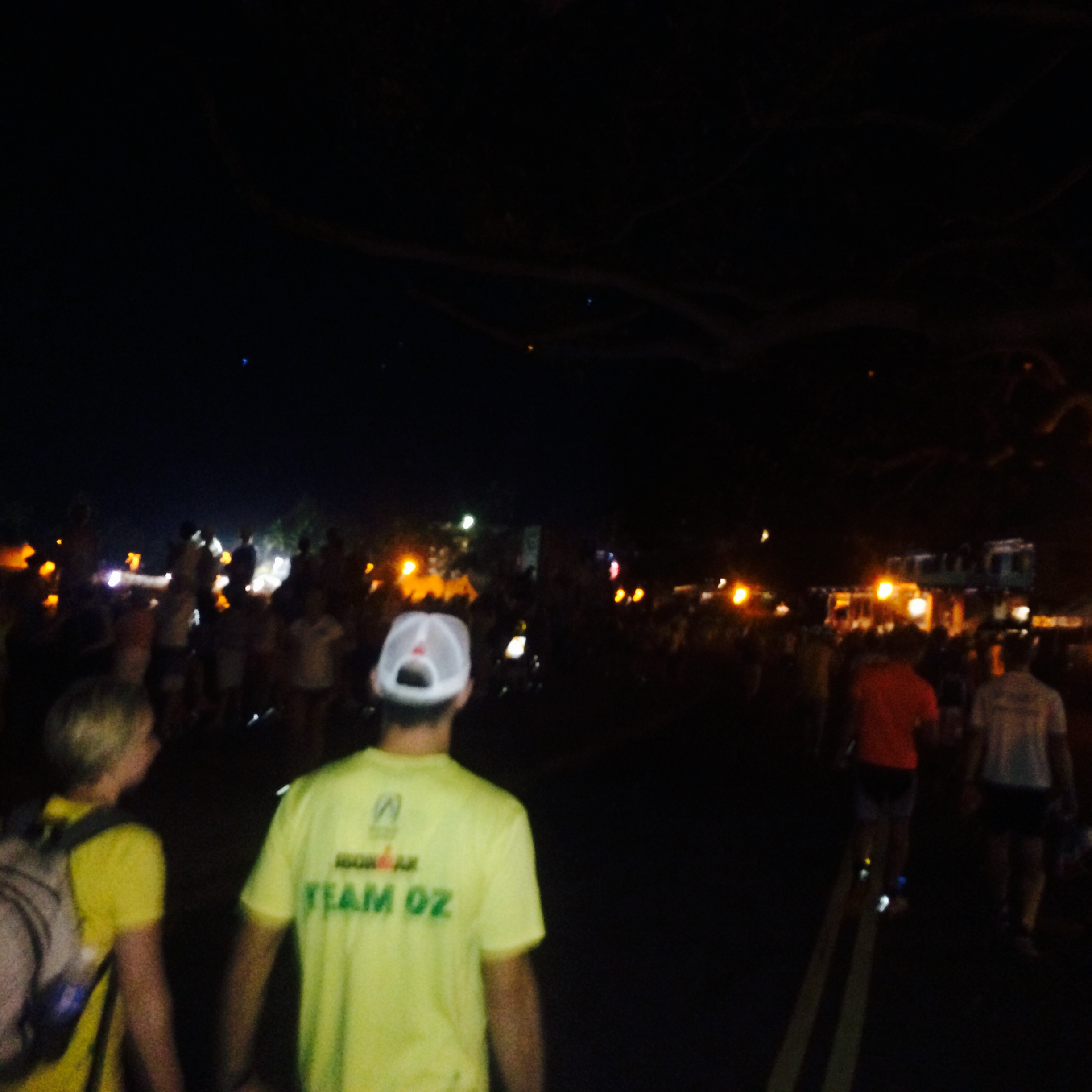Kona 2014
Part 1: Up to the start of the race
Prelude
ďI canít feel my leg,Ē my son yelled out and then started swimming rapidly for shore. I had removed several sea urchin spines from his ankle while he grimaced in pain, and as we started to turn back the pain got worse so he started swimming faster. Unfortunately, rather than aiming for the sandy parts of the beach on the edges, he was headed straight toward rocks. My wife frantically followed him and tried to get him to turn toward the sand, but he barreled on ahead, pushed in as well by the waves. I trailed behind with my daughter, and we also ended up getting washed up on the rocks. So in addition to my sonís sea urchin wounds, we would all end up bloodied on our legs, feet, and hands from scraping against the rocks. I also stepped on an urchin near the shore and got five spines on the end of my toe. We had only been in Hawaii for a few hours, and our first beach outing had led to disaster.
In the end, after getting hauled ashore
and bandaged up by a lifeguard, my son was fine. The remains of the
urchin spines lodged in his ankle were initially painful, but
the pain subsided and the wounds would heal without much further
treatment. But out in the water we had reacted out of panic, and
our cuts and scrapes from washing up on the rocks took longer to
heal.
Background
We had come to Kailua-Kona, Hawaii for the 2014 Ironman World Championships. For those who donít know, just gaining entry into this race is very difficult, with most Ironman races around the world offering 50 entries for upwards of 2000 to 2500 competitors. In addition to the top professionals, those competing in the 2.4 mile ocean swim, 112 mile bike along the gusty coastline, and 26.2 mile run through the lava fields were some of the best amateur triathletes in the world. I had qualified at Ironman Wisconsin in Madison in September 2013, earning the last spot in my age group. Wisconsin was my second Ironman, after completing Ironman Coeur díAlene that June. My qualification was unexpected, so much so that I had signed up for the 2014 Ironman Wisconsin the day before racing it in 2013. So Hawaii would be my second Ironman of the year, only five weeks after Wisconsin.
2014 was my fourth year of triathlons, and my third year of Ironman training, having crashed on my bike and broken my collarbone in 2012, a mere three weeks before what was supposed to be my first Ironman. I had gotten active in endurance sports only in 2009, after never having run more than 2 miles straight previously.
In the summer of 2008, we had moved to Madison (Middleton, technically) from Princeton, New Jersey, and in February 2009 we had gone up to Hayward to watch the American Birkebeiner cross-country ski race, the largest in North America. Despite only having been on skis a few times as a kid, I decided then that I would like to enter the Birkebeiner the following year. Perhaps more daunting than the prospect of skiing 50 kilometers over hills and through the woods of Northern Wisconsin was the fact that I was terribly out of shape. Despite never having really exercised in my life, until the last several years my weight hadnít changed that much. However by that winter I had been gaining weight for a while and was up to over 230 pounds. So I decided that in order to ski the race I would need to get in shape, and the best way to do that would be to start running.
I hated running at first, as it was incredibly painful and embarrassing to only be able run for a few minutes without walking. As is my typical way, I did not take up running by starting slow and gradually increasing my pace and distance. Rather, I would run at a reasonably fast pace for as long as I could before gasping and walking, catch my breath and regain my composure, and do it again. Over that spring and summer I got better at running, and started to really enjoy it. In the process, I lost weight rapidly, from my initial 230 pounds in February down to 180 by September, and eventually down to 165 where Iíve been, more or less, since that time.
I ended up skiing the Birkebeiner four times, and the training for it opened my eyes to the world of endurance sports. Rather than just being a means to get in shape, running became a pursuit in its own right, and I started to enter local 5K and 10K races, gradually building up to a marathon in May 2010. In the process of training for a second marathon that fall, overzealous buildup of mileage and pacing led to a stress fracture in my foot. Over the summer, my wife, who had also taken up running and gotten into endurance sports, had entered her first triathlon. At the time I had said that I would never do that, and would stick to running. But now with my foot injured and running compromised, I decided to buy a bike and start riding. So once I was already doing two of the three disciplines, it was time to take up swimming.
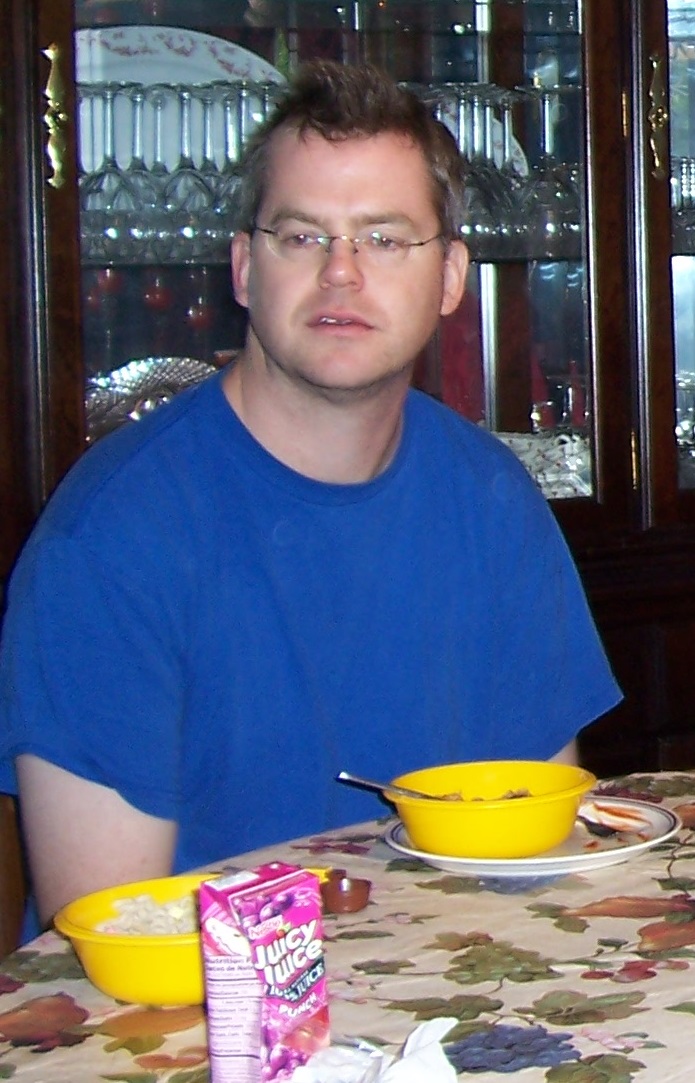
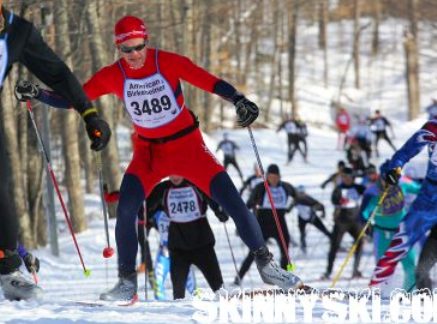
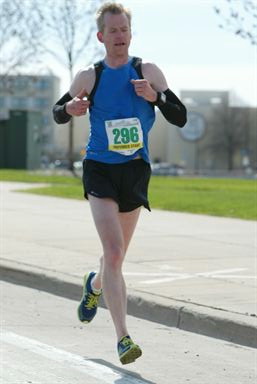
Having no previous swim background, apart from Red Cross swim lessons as a kid which taught me the invaluable skill of the sidestroke, swimming has been a challenge. I started in a masters technique class taught by Derek Scheer at our health club, where initially I could not swim more than 25 yards without standing at the wall and gasping for air. Over time I gained some proficiency, having taken multiple lessons and many sessions of masters classes, but compared to the other sports my progress has been slow. I now enjoy the swim leg of triathlons much more than I did when I first began, but I am always very happy to be out of the water.
2011 was my first year of doing triathlon.
I started with a sprint distance race, followed by an Olympic
distance (roughly double the distance) a couple of weeks later,
before ending the year with two half-ironman races. That fall I
volunteered for Ironman Wisconsin and registered for the
following yearís race. In order to help prepare for the race, I
joined a team run by Endurance House, our local triathlon shop. This was a great
opportunity to train, learn more about the sport, and meet some
great people. Iíve trained with the team ever since.
Unfortunately, on our last group ride before the Ironman, I hit
a seam in the road and was launched over my handlebars, breaking
my collarbone upon impact. So I ended up watching the Ironman in
a sling, but was determined to race the following year. Not
content to wait a full year for Ironman Wisconsin, I also
entered Coeur díAlene.
The First Week
We arrived in Kona one week before race day, to have time to acclimate and explore a bit before the race (with more time for the latter afterward). The acclimation process began as soon as we stepped off the plane. The temperature was 35 degrees with snow in the forecast when we boarded our first flight in Madison, and it was 85 and humid when we stepped off the plane in Hawaii. Walking down the jet bridge I began to sweat, which I actually took as a good sign. It had been an unusually cold summer in Madison, and I had worn long sleeves and pants on the bike until into July. To prepare for Kona I had purchased two space heaters and had spent the last couple of weeks on my bike trainer and treadmill with the heaters cranked to the limit, soaking my clothes and making puddles of sweat on the floor. (I did use a mat.) So my sweat rate was high, which meant I had a chance of staying cool, or at least lasting longer, in the lava fields.
In addition to our snorkeling episode with the sea urchins, during that week my wife took the kids to another beach and to do some shopping, while I did some training on the course. The entire race at Kona is a series of out-and-back loops, which made it relatively easy to get to know the key sections. First, the swim course goes out from the Kailua pier along the coastline, turns around a boat, and then heads back to the pier. The bike course has a short out-and-back section in town, just up the hill from our condo, then heads out along the Queen K Highway up to the town of Hawi on the northern tip of the island, before heading back to Kona. Finally the run has a five mile out-and-back section along AliíI drive in town (passing our condo at mile 2 and 8), then has a six mile stretch along the Queen K out to the Energy Lab, a two mile out & back in the Lab, and then ends with the six miles back on the Queen K into town before finishing back at the pier.
Several mornings during the week before the race, I would join the hundreds of others at the pier for a morning swim. Having swum mostly in the lakes in Wisconsin, I was amazed by the clarity of the water in Hawaii. Rather than a dark green mass where I could not see my own arm extended in front of me, it was possible to see to the ocean floor some fifty feet below, and to watch the coral and fish as I swam along. Each morning there was a boat run by Coffees of Hawaii, which I swam out to and enjoyed a free coffee at the swim-up bar. From there Iíd continue a bit further out, then head straight back into the pier. I knew my swim time would not be fast, but I was relaxed in the water and knew Iíd complete it.
More daunting were the bike and the run courses. The bike course is relatively simple on paper, with very few turns, mostly rolling hills, and only one sustained climb on the way up to Hawi. However the winds blowing in from the coast and down from the mountains, coupled with the heat and baking sun, posed their own challenges. In watching and reading the coverage of previous races, I knew that the climb and descent from Hawi were the crucial parts of the course, so I was sure to ride that section of the course.
I had never been so scared on a bike as on the first time down from Hawi. I am typically cautious on descents, especially the long descents where the bike really gains speed. Most of the terrain around Madison has short but steep hills, where you can gain some speed on a descent but itís quickly lost by another uphill. Coeur díAlene was my first experience with a sustained downhill, and I had sat up and just hung on. The descent from Hawi is not as long as at Coeur díAlene but the winds add incredible unpredictability. I did fine on the climb into a cross wind, making a U-turn at where I guessed the course turnaround would be (I was off by a few blocks), and started down. Initially I was cruising, feeling good down in my aerobars. Then I came around a bend and got smashed by a gust of cross wind. As my front wheel wobbled, I jumped to my basebars, braked slightly, and fought to stabilize the wheel.
The rest of the way down, I largely coasted and mostly stayed up on the basebars, simply trying to stay upright. I knew that unlike the top pros who bomb down the hill in the aerobars and keep pushing high power all the way down, come race day I would be going down easily and try to make up some time on other parts of the course. I also knew that I would have to keep my nutrition and drinks close at hand, as I would want to minimize the amount of times I would have to take my hands off my handlebars in the wind.
While the Hawi descent is key part of the bike course, the most (in)famous part of the run course is the section in Energy Lab. This roughly four mile stretch is known for being hot and isolated, and coming between miles 16-20 of the marathon it is where many races have blown up. The first part of the run course is packed with spectators, and there are still some along the Queen K, but the Energy Lab is closed to traffic. Itís just you, the road, the other racers, and the elements. The day I ran the Energy Lab in training it was 86 degrees, sunny, and humid. I had swum earlier and was only planning to run that section at an easy pace. I started at a pace which felt good, but backed off after one mile, backed off more the next mile, and walk/jogged the rest of the way. By the end I was drenched in sweat, and a mixture of sweat and sunscreen was stinging my eyes so that I could barely keep them open.
In addition to the training and a bit of
relaxing, a great part of being in Kona on race week was bumping
into professionals who were also training or at least in town
for the race. I had
become a real fan of the sport, so was excited to run into
current and former pros like Caitlin Snow (one of the top
runners in the sport) and Julie Dibens
(one of the top cyclists) at dinner, Chris Lieto
(2nd place in 2009 and the top biker of his time)
setting up his More than Sport booth down by the pier, Caroline
Steffen (multiple podium finisher) being motorpaced
by Chris MacCormack (2 time champ),
Melissa Hauschildt (2 time 70.3
champ) biking through town too injured to compete, and Chrissie
Wellington (an all-time great, unbeaten at the Ironman distance
and 4 time champ), along with current top pros Mary Beth Ellis,
and T.J. Tollakson at the post-race
TYR brunch. During
my run in the Energy Lab, Iíd also seen Paula Newby-Fraser
(perhaps the greatest female Ironman competitor of all-time and
8 time champ), who was coaching Olympic speed skating great Apolo Anton Ohno
for this yearís race. (Apolo would
later finish in a very impressive time, under 10 hours). Covered
in sweat and unable to keep my eyes open, I still got a picture
with her. At the
expo I also ran into Bevan James Eyles
from the podcast show IM Talk and was interviewed for the show.
(At the 1:26:59 mark of this IM
Talk Episode.)
Race Day
Race day began with an early solo breakfast (bagel & a banana) at 4 AM (my usual wakeup time), then I caught the free athlete shuttle down to the expo, walking the rest of the way to the King K hotel. The streets around the pier were closed off and hundreds of athletes were all making their way groggily in the same direction in the pre-dawn. The whole check in process was more involved than a typical race, starting with body marking involving volunteers applying temporary tattoos to each arm with my bib number. I was going to wear arm coolers and a short sleeve trisuit for the race, so apart from the swim my number would not be visible. I asked a volunteer if the numbers were really necessary, and he replied that they were more for identification in case I did get separated from my bike or run bib, adding, ďTheyíre more for recovery than rescue, if you know what I mean.Ē Dwelling on such a morbid thought before the race wasnít advisable, so I moved on.
After finally making it through all the
various checks and getting out to the pier to do final
adjustments on my bike, I heard helicopters overhead, and just
caught sight of the Red Bull skydivers who landed just off the
pier. As I was
pumping my bike tires, the cannon fired to start the male pro
race, meaning my start time was only 20 minutes off. Without time to really
worry about the start, I finished fiddling with the bike, got in
the crush of people heading down the steps to the ďbeachĒ at the
pier, and got in the water.
PART TWO
